- Total Pharmacy® August 2025
- Volume 03
- Issue 04
Bridging Gaps, Building Connections: A New Vision for the Future of Pharmacy
At the Total Pharmacy Solutions Summit Summer 2025, John Hill, MBAHCM, and Pooja Babbrah, MBA, from the National Council for Prescription Drug Programs, discuss their organization’s plan for advancing the pharmacy profession.
According to the National Council for Prescription Drug Programs (NCPDP), its team of health care professionals and diverse stakeholders gather to improve the exchange of health care information. With a well-developed strategic plan spanning from now until 2028 and beyond, NCPDP is rolling out its innovative approach for the future of pharmacy.
John Hill, MBAHCM, NCPDP’s chief operating officer, and Pooja Babbrah, MBA, NCPDP’s executive vice president of strategy and industry alignment, hosted a session at the Total Pharmacy Solutions Summit Summer 2025 event, titled “Bridging Gaps, Building Connections: NCPDP’s New Vision for the Future of Pharmacy." The duo served as this summer’s keynote speakers, breaking down the opportunistic initiatives NCPDP is conducting for the betterment of community pharmacy.
Through collaboration and innovation in different health care settings, NCPDP is helping develop the pharmacy profession into a future health care role that stands out from others.
“We’re driving organizational decision-making and making sure, working with our members, our board, our stakeholders such as yourself, and identifying NCPDP priorities and initiatives, making sure that they’re aligned with our vision and long-term goals,” continued Hill.
READ MORE:
Read on for some key takeaways from NCPDP’s presentation:
- While NCPDP works with pharmacists, clinicians, and various providers, its session focused on the organization’s internal goals. From bolstering membership to gaining more participation in its annual meetings, the organization presented its commitment to fostering more collaborations with members and facilitating opportunities for sustainability.
- Despite NCPDP’s strategic plan focusing on connected care within the health care sector, it too shines a spotlight on pharmacists and their role. “Last May, we updated our vision to improve health care by facilitating connected care,” said Hill. “We also enhanced our mission to develop standards that enable an opportunity to cross health care systems by building consensus. This includes building clinical technology and workflow gaps between providers—including you as pharmacists, patients, and payers—that aim to innovate and support volunteer models to enhance the role of pharmacists as a member of the care team.”
- Hill then passed the baton to Babbrah, who discussed NCPDP’s ongoing strategy for connecting providers and advancing care. She discussed how Health Information Technology Advisory Committee recommendations informed their strategic plan. “By working with key stakeholders, we’re helping to position not only NCPDP, but us as an organization to help other organizations shape [artificial intelligence’s] future in pharmacy and in health care in a way that we truly believe will benefit patients and pharmacists and providers as well.”
- Babbrah then discussed challenges and frustrations pharmacists have regarding drug shortages and facilitating patients’ prescriptions when the pharmacy is out of stock. She introduced a pilot program her organization has been testing to overcome drug shortage challenges. “We know how frustrating it can be to find, say, specialty medications or ones that may be on the FDA shortage list,” continued Babbrah. “So NCPDP is grateful, we were able to get some money to support and manage a pilot [program] that will allow providers to check the availability of a medication prior to sending the prescription to the pharmacy, and for you as pharmacists to be able to let the provider know when you’re going to have that medication in stock.”
- “I’m excited to share just an evolution of another project that we’ve been working on for a while. This is the patient experience identifier, and it’s really a transformative advancement in patient matching and data interoperability,” said Babbrah. “As we all know, it’s very difficult sometimes when patient records don’t match. It wastes time, increases costs, and really can lead to dangerous errors in patient care. Ensuring that patient records are matching, especially as you start to do some of these clinical services, is so important.”
To read these stories and more,
Articles in this issue
Newsletter
Pharmacy practice is always changing. Stay ahead of the curve with the Drug Topics newsletter and get the latest drug information, industry trends, and patient care tips.













































































































































